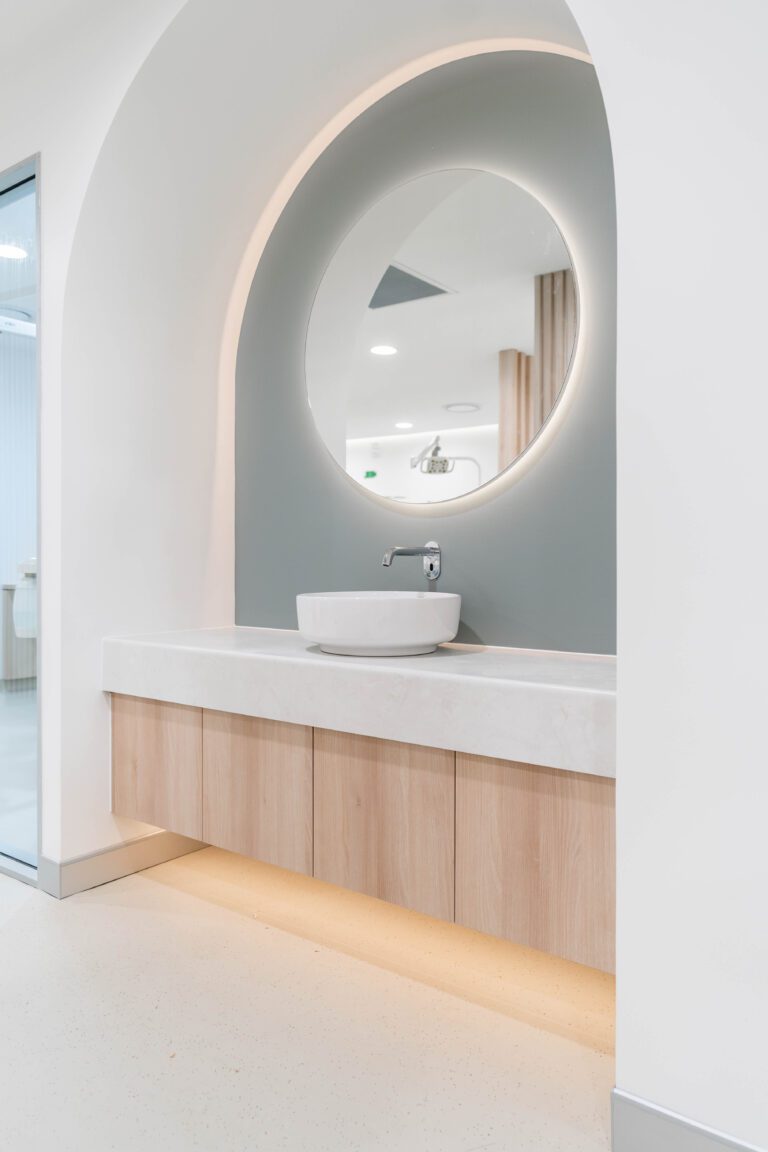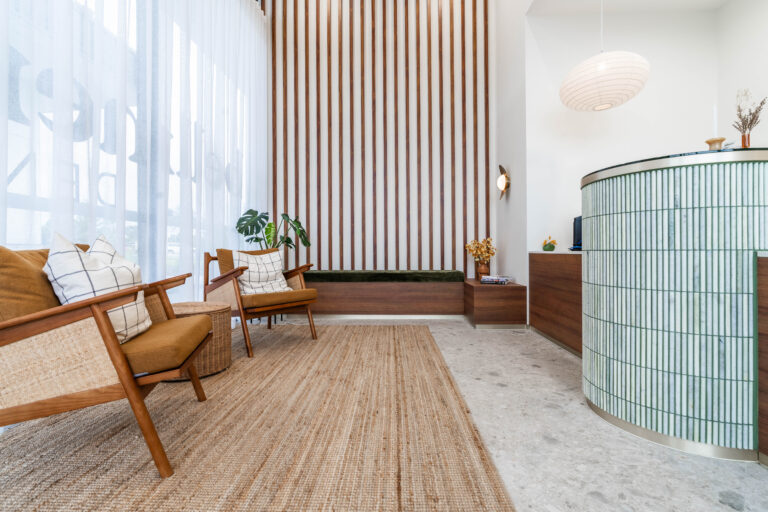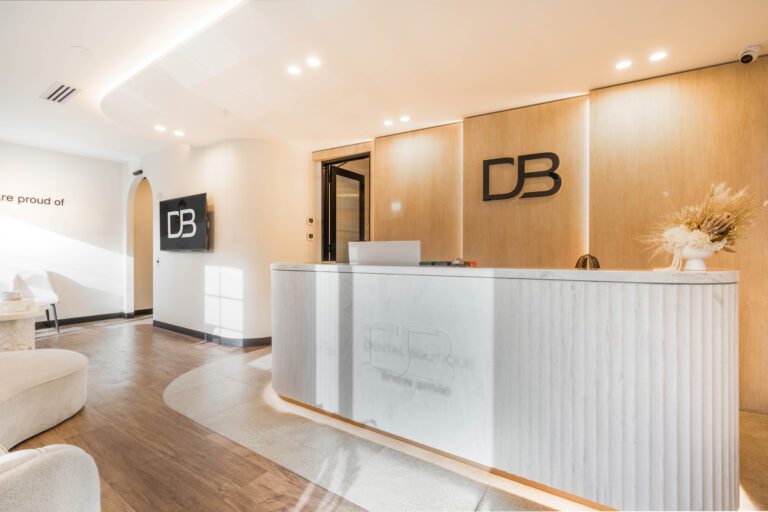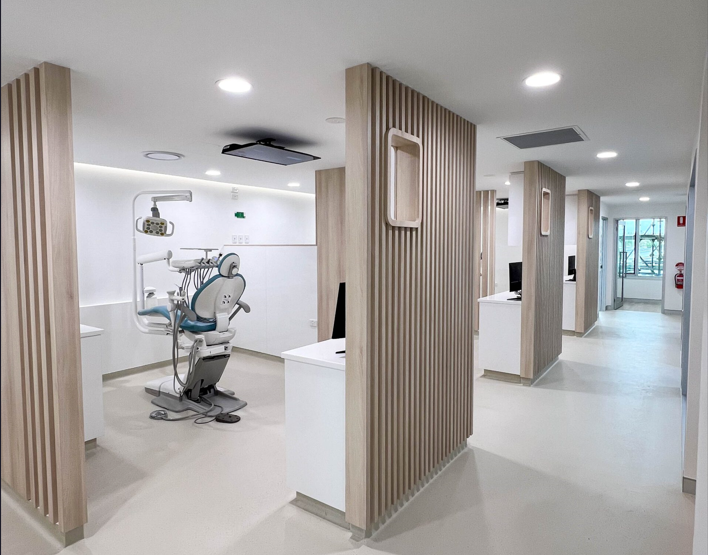
In healthcare settings, ensuring high standards of hygiene and safety is essential. Fit-outs must prioritise patient health, staff well-being, and operational efficiency to create environments that are both compliant and conducive to overall health.
When creating an effective practice, fit-out specialists need to consider various elements during the design phase. Proper air quality, advanced infection control measures, and medical-grade materials are just the beginning. This blog will explore how these factors, among others, come together to create a safe and efficient healthcare environment.
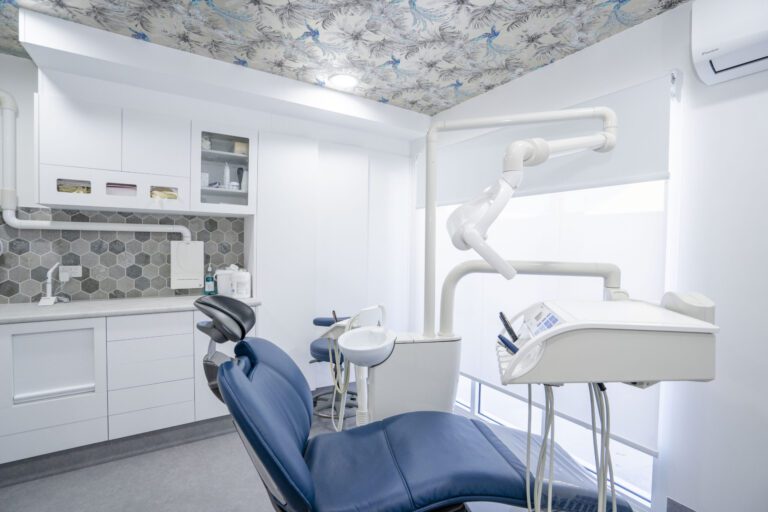
Designing for Health and Safety
Effective infection control in healthcare environments starts with thoughtful design. Whether it’s a medical clinic, veterinary practice, or dental surgery, careful planning is essential to ensure the highest standards of hygiene and safety in the workplace. From selecting appropriate materials to optimising the layout and ensuring emergency preparedness, every decision is vital in preventing the spread of infections.
Material Choices for Infection Control
Selecting the right materials is fundamental to maintaining hygiene in healthcare settings. Here’s how some of the best choices contribute to a cleaner, safer environment:
- Antimicrobial Surfaces: High-touch areas like door handles, light switches, and handrails can be hotspots for spreading infections. Materials with antimicrobial properties, such as copper alloys, can significantly reduce the presence of harmful pathogens.
Copper, for instance, naturally kills a wide range of microorganisms, including bacteria and viruses, within a short time after contact. Integrating such materials into frequently touched surfaces actively decreases the risk of infection transmission, helping to protect both patients and staff. - Non-Porous Surfaces: Using non-porous materials like stainless steel, Corian, and high-quality laminates is great for areas that require constant cleaning, like countertops, sinks, and medical equipment surfaces. These materials block bacteria and viruses from absorbing into the surface, making them easier to clean and more effective at maintaining a sterile environment.
Stainless steel is particularly durable and corrosion-resistant, while Corian offers a seamless, non-porous finish ideal for good work health and safety. High-quality laminates deliver a smooth, easy-to-clean surface that combines practicality with visual appeal, and they are tailored to the specific needs of different healthcare environments.
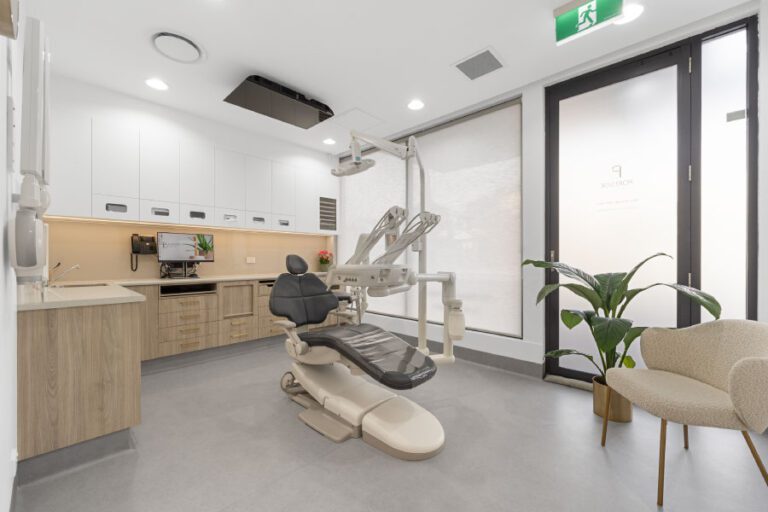
Vinyl Flooring
Vinyl flooring is an excellent option for working environments because of its durability and ease of maintenance. Designed to withstand heavy foot traffic and the movement of equipment, vinyl flooring is ideal for operating rooms, treatment areas, and corridors. Its non-porous surface doesn’t trap dirt or bacteria, making it easy to clean and disinfect, which is crucial in spaces that require frequent sanitisation.
Additionally, vinyl’s resistance to spills and stains makes it a practical choice for areas where chemicals or bodily fluids might be present, ensuring that the floor remains hygienic and safe.
Epoxy Coatings
Epoxy coatings are frequently used on floors and walls in healthcare settings to create a seamless, non-porous surface. This type of coating eliminates cracks and crevices where bacteria and other contaminants can accumulate, making it easier to maintain a sterile environment. Epoxy is also highly resistant to the chemicals and cleaning agents commonly used in healthcare facilities, ensuring that the surface remains intact and effective over time.
Additionally, you can customise epoxy coatings with non-slip textures or contrasting colours to enhance safety, especially in high-risk areas where spills or slips might occur.
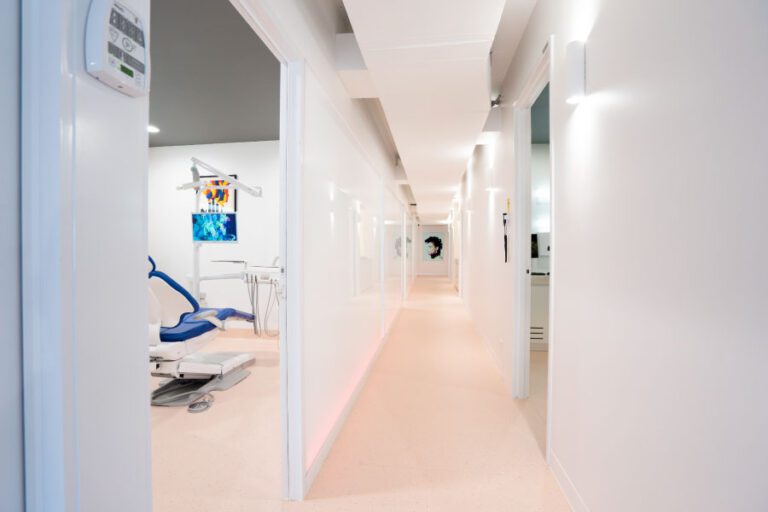
For more detailed guidance on infection prevention and control, download Guidelines for Infection Prevention and Control here
How to Optimise Your Layout
Beyond materials, the layout of the space is vital for infection control and overall safety. Effective zoning involves creating distinct areas for clean and dirty activities, reducing the risk of cross-contamination. For example, separating sterile procedure areas from waste disposal zones helps contain potential contaminants and maintains a higher standard of hygiene.
Good personal hygiene is paramount in any medical workplace environment. Strategically placing handwashing stations throughout the facility—near entrances, examination rooms, and common areas—encourages regular cleaning, significantly reducing the spread of infections.
Safety also extends to emergency preparedness. Incorporating clear evacuation routes and accessible emergency exits into the design ensures that in a fire or medical emergency, the response can be quick and organised. These safety elements seamlessly integrate into the layout to enhance the space’s overall functionality.

Air Quality and Ventilation
Poor air quality and ventilation can lead to the spread of airborne pathogens, which is a serious concern in healthcare settings where patients are often more vulnerable. Prioritising air quality in every fit-out by using advanced ventilation systems keeps the air clean and safe.
Modern HVAC systems equipped with high-efficiency particulate air (HEPA) filters are essential for trapping airborne particles like dust, allergens, and pathogens. This reduces the risk of airborne infections and improves overall indoor air quality, creating a healthier environment for patients and staff. Additionally, these ventilation systems should be easy to maintain, allowing for regular filter replacements to ensure optimal air quality over time. By focusing on ventilation, healthcare facilities can create environments that support patient recovery and well-being while also protecting healthcare workers.
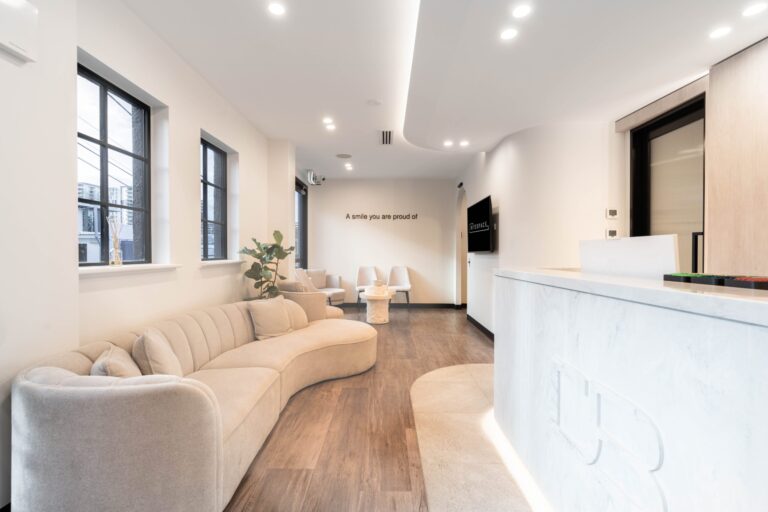
Trust Our Team at Ritespace Constructions for a Quality Fit Out
Elevating hygiene and safety standards in medical, veterinary, and dental fit-outs requires careful planning and attention to detail. By focusing on infection control, air quality, layout optimisation, and the use of medical-grade materials, healthcare environments can be designed to support the health and well-being of both patients and staff.
At Ritespace Construction, we meticulously craft every fit-out to not only meet but exceed your expectations. Whether you care for human or animal patients, their safety—and yours—is at the heart of everything we do. Connect with our team today to schedule a consultation, request a free quote, and discover how we can bring your vision to life.

